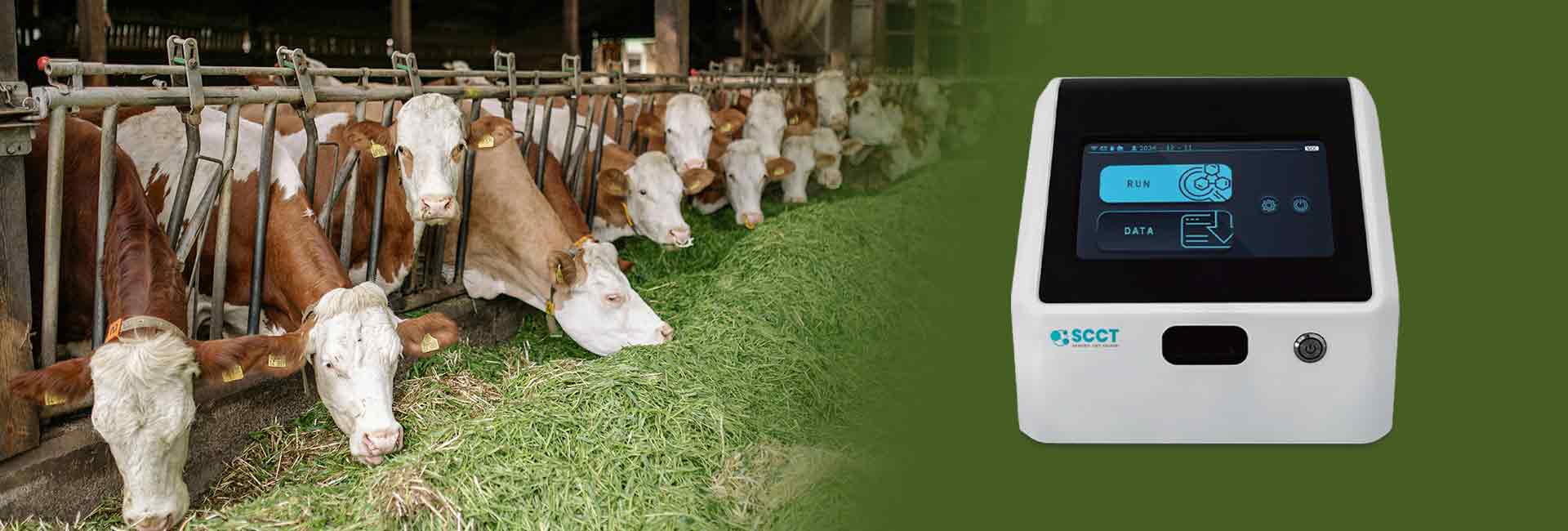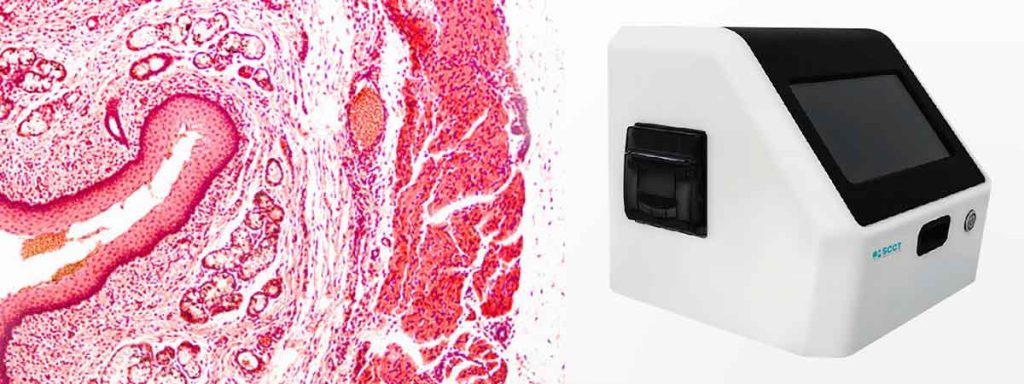

Somatic cell count, or SCC, measures the number of somatic cells in one milliliter of milk. This is usually written as “cells per mL.” For example, raw milk typically contains between 20,000 and 400,000 cells per mL. High SCC numbers often signal udder health problems, like mastitis. Farmers who understand SCC units explained can improve milk quality and cow health.
- High SCC lowers milk quality, shelf life, and cheese yield.
- Clean farms and proper milking routines help keep SCC low.
Key Takeaways
- Somatic cell count (SCC) measures udder health and milk quality. Lower SCC indicates healthier cows and better milk.
- Regular testing of SCC helps detect mastitis early. Farmers should test at least once a month to maintain milk quality.
- High SCC can lead to off flavors, reduced shelf life, and financial losses. Keeping SCC below 200,000 cells/mL is crucial for profitability.
- Good hygiene practices and proper milking routines are essential. Clean bedding and effective milking techniques help keep SCC low.
- Monitoring SCC supports compliance with regulations. Meeting SCC standards protects farm income and builds consumer trust.
SCC Units Explained
Somatic Cell Count Definition
Somatic cell count refers to the number of somatic cells present in a milk sample. Scientists and dairy professionals use this measurement to assess both milk quality and udder health. Somatic cells include white blood cells, which increase when a cow’s udder faces infection or inflammation, such as mastitis. The somatic cell count serves as a crucial indicator in dairy science. It helps farmers and processors monitor the physiological health of dairy cows and the safety of milk. High somatic cell counts often signal udder inflammation, which can lead to bacteriological issues and changes in milk composition. These changes may reduce the quality of dairy products.
Note: Somatic cells also play a protective role in milk. Their enzymes can sometimes enhance the technological properties of dairy products.
Cells per mL Meaning
The dairy industry uses “cells per milliliter” (cells/mL) as the standard unit for measuring somatic cell count. This unit provides a precise way to quantify the number of somatic cells in each milliliter of milk. The use of cells per mL allows for accurate comparisons between samples and across herds. It also helps identify trends in udder health and milk quality.
- The scc units explained as cells per mL offer several advantages:
- They provide a clear measurement of somatic cells in milk.
- They help evaluate both milk quality and udder health.
- High values can indicate mastitis or other health problems in cows.
- The unit supports herd health management and food safety.
- The scc units explained in this way also reflect the likelihood that milk is free from harmful bacteria. Lower counts suggest better milk quality and safer products for consumers.
| Country/Region | Median BTMSCC (cells/mL) | SCM Prevalence (%) |
|---|---|---|
| Brazil | 392×10³ | 46 |
| Argentina | 329×10³ | 54 |
| Colombia | 642×10³ | 50-55 |
| Uruguay | 376×10³ | 54 |
| USA | <200×10³ | N/A |
| Canada | <200×10³ | N/A |
| United Kingdom | <200×10³ | N/A |
The scc units explained as cells per mL allow for international comparisons. For example, the United States, Canada, and the United Kingdom maintain median somatic cell counts below 200,000 cells/mL. In contrast, some South American countries report higher averages. These differences highlight the importance of monitoring and managing somatic cell counts worldwide.
Over the past decade, the average somatic cell count in the United States has decreased from 322,000 to 228,000. This trend shows improved udder health and better management practices. Many dairy producers now aim for a somatic cell count below 200,000 cells/mL, which supports higher milk quality and safer dairy products.
The scc units explained through cells per mL remain essential for both farmers and processors. They help ensure that milk meets quality standards and supports the production of safe, high-quality dairy products.
Somatic Cell Counts & Milk Quality
Normal and High SCC Values
Somatic cell counts in milk serve as a key indicator of udder health and milk quality. Most healthy cows produce milk with a count below 100,000 cells per milliliter. When the count rises above 200,000 cells/mL, the risk of mastitis increases sharply. Many countries set legal limits for bulk tank scc to ensure safe milk for consumers. The table below shows the maximum allowed somatic cell counts in milk for several major dairy-producing countries:
| Country | SCC limit (cells/mL) |
|---|---|
| European Union | 400,000 |
| New Zealand | 400,000 |
| Switzerland | 350,000 |
| Australia | 400,000 |
| Canada | 400,000 |
| United States of America | 750,000 |
Bulk tank scc values above these limits can result in penalties or milk rejection. Dairy farms monitor these counts closely to maintain compliance and protect herd health.
Impact on Milk Quality
Milk quality depends heavily on somatic cell counts. High cell counts can cause several problems:
- Off flavors develop in milk, making it less appealing to consumers.
- Shelf life drops significantly because enzymes from somatic cells break down milk components.
- Lower counts improve taste and extend shelf life. For example, milk with a count of 25,000 cells/mL can last up to 48 days longer than milk with a count of 340,000 cells/mL.
- High cell counts increase the risk of mastitis, which can lead to antibiotic residue violations and further reduce milk quality.
Dairy processors often pay more for milk with low somatic cell counts. High cell counts can lead to price penalties and even discarded milk. One study found that farms lost an average of $533 due to high cell counts, with most losses coming from milk that failed quality tests. Bulk tank scc management helps protect both farm income and consumer safety.
Using a Somatic Cell Count Tester
Accurate measurement of somatic cell counts is essential for maintaining milk quality. Direct methods, such as flow cytometry and fluorescent imaging, provide high accuracy but require specialized equipment. Portable devices like somatic cell count test kit use advanced fluorescent dyes to deliver reliable results on the farm. Indirect methods, such as the California mastitis test, offer a quick check but lack the precision of direct testing. Regular use of a somatic cell count tester allows dairy producers to track bulk tank scc, detect problems early, and take action to keep milk quality high.
Mastitis and High SCC
Causes of Elevated SCC
Elevated somatic cell counts often signal underlying udder health problems in dairy cows. Mastitis stands as the leading cause of high SCC. This condition results from infections by mastitis pathogens, which invade the udder tissue. Poor hygiene and environmental conditions increase the risk of infection. Many dairy heifers experience elevated SCC at their first test milking after calving. Studies show that about 18.1% of heifers have high SCC at this stage. New cases of elevated SCC continue to appear throughout the year, with an incidence rate of 1.72 new cases per cow-year. Over a study period, researchers detected 24 new cases, highlighting the ongoing challenge of controlling mastitis and its impact on SCC.
- Common causes of elevated SCC:
- Infection by mastitis pathogens
- Poor hygiene in the milking environment
- Stress or injury to the udder
- Inadequate milking routines
Mastitis and Udder Health

Mastitis affects both the health of the udder and the quality of milk. The disease appears in two main forms: clinical mastitis and subclinical mastitis. Clinical mastitis causes visible symptoms and a sharp rise in SCC. Subclinical mastitis, however, leads to a moderate but prolonged increase in SCC, often without obvious signs. Both forms reduce milk yield and quality. The type of mastitis pathogen involved influences the severity and duration of SCC elevation.
| Type of Mastitis | SCC Response | Impact on Udder Health |
|---|---|---|
| Clinical Mastitis | High SCC, short duration | Positive immune response, bacterial clearance, temporary SCC spike |
| Subclinical Mastitis | Moderately high SCC, prolonged | Chronic infection, lower milk yield and quality |
| Gram-negative Bacteria | Strong immune response, quick recovery | SCC remains elevated for weeks |
| Gram-positive Bacteria | Chronic, moderate SCC | Long-term negative impact on udder health and milk production |
Mastitis pathogens such as gram-positive and gram-negative bacteria trigger different immune responses. Gram-negative bacteria often cause a strong but brief reaction, while gram-positive bacteria can lead to chronic problems. Effective control of mastitis and its pathogens helps maintain udder health and keeps SCC within acceptable limits.
Economic and Regulatory Effects
High SCC levels create significant economic challenges for dairy farms. Each increase of 100,000 cells in bulk tank SCC results in a loss of 5.5 pounds of milk per cow per day. Lower milk production, reduced pregnancy rates, and increased death losses all contribute to financial strain. The yearly avoidable cost of mastitis can reach €8,235, representing about 5% of a herd’s net return if mastitis incidence drops by half. Each case of clinical mastitis costs around €278, while subclinical mastitis cases cost about €60.
| Economic Impact | Cost (€) | Description |
|---|---|---|
| Yearly avoidable cost of mastitis | 8,235 | 5% of herd net return with 50% reduction in mastitis incidence |
| Cost per case of clinical mastitis | 278 | Direct cost per case |
| Cost per case of subclinical mastitis | 60 | Direct cost per case |
| Profitability of milk withdrawal | N/A | Withdrawing high SCC milk is not profitable |
Regulatory standards require farms to keep SCC below certain thresholds. Agencies such as the FDA and USDA enforce these limits. Non-compliance can result in fines, product recalls, or even farm closures. Regular milk quality tests help farms meet these standards and maintain profitability. High-quality milk with low SCC improves marketability and builds consumer trust.
- Key regulatory implications:
- Compliance with SCC standards prevents penalties.
- Regular testing supports operational success.
- Maintaining low SCC levels protects farm income and reputation.
Monitoring Somatic Cell Count
Regular Testing Practices
Dairy farms rely on regular monitoring to maintain healthy levels of cells in milk. Testing protocols help identify problems early and support mastitis control. Most farms conduct at least one somatic cell count test each month. The same laboratory that performs standard plate count testing usually handles these tests. If two out of four recent results show more than 750,000 cells per milliliter, the farm receives a warning. A single reading above 1,000,000 cells per milliliter triggers a confirmatory test. These steps allow for early detection of mastitis and help prevent outbreaks.
| Aspect | Details |
|---|---|
| Frequency of SCC Testing | At least one test per farm each month is required. |
| Action on High SCC | If 2 out of 4 recent counts exceed 750,000 cells/mL, a warning is issued. |
| Immediate Action Level | Any single count over 1,000,000 cells/mL triggers a confirmatory test. |
| Testing Lab | Typically the same lab that conducts SPC testing. |
Modern technologies make monitoring easier for dairy producers. Automated tools gather data from multiple sources, saving time and reducing manual work. Real-time monitoring features allow quick responses to rising cells. Many farms use a somatic cell count tester for individual cow SCC measurements. These devices validate the effectiveness of mastitis control strategies and support herd management.
Tip: Regular SCC monitoring provides accurate information about udder health, even when milk appears normal. This helps dairy farms track subclinical mastitis and maintain high milk quality.
Managing SCC on the Farm
Dairy farmers use several best practices to keep cells low and prevent mastitis. Clean, dry bedding limits bacterial exposure. Fans and sprinklers must be used wisely to avoid wet stalls. Aggressive fly control protects herd health. Training the team on proper milking protocols reduces infections. Providing fresh, clean water helps cows cool themselves and stay healthy. Separating cows with high individual cow SCC prevents the spread of infection. Farms should set measurable goals and track progress.
- Keep bedding clean and dry.
- Use fans and sprinklers carefully.
- Control flies aggressively.
- Train staff on milking protocols.
- Provide fresh water.
- Manage high-SCC cows separately.
- Track progress with clear goals.
Interventions for reducing somatic cell count include effective milking hygiene, pre- and postmilking teat disinfection, and lactation therapy. Antibiotic dry cow therapy prevents new infections during the dry period. Culling chronically infected cows and maintaining a clean environment also support lowering SCC. Vaccination reduces the severity of coliform mastitis in herds with environmental mastitis.
| Intervention Type | Description |
|---|---|
| Milking Hygiene | Effective milking hygiene practices to prevent mastitis. |
| Teat Disinfection | Pre- and postmilking teat disinfection with effective disinfectants. |
| Lactation Therapy | Treatment during lactation to address existing infections. |
| Antibiotic Dry Cow Therapy | Administering antibiotics to nonlactating cows to prevent new infections during the dry period. |
| Culling | Removing chronically infected cows from the herd to reduce SCC. |
| Environmental Control | Maintaining a clean, dry environment for cows to minimize exposure to pathogens. |
| Vaccination | Using vaccines to reduce the severity of coliform mastitis in herds with environmental mastitis. |
Dairy farms should take action when bulk tank SCC rises above 200,000 cells per milliliter. Each increase of 100,000 cells leads to a loss of 5.5 pounds of milk per cow per day. Maintaining excellent milking hygiene, improving milking routines, and prompt treatment of mastitis are essential for mastitis control. Monitoring individual cow SCC helps identify cows needing attention and supports early detection of mastitis. Long-term benefits of lowering SCC include higher milk prices, reduced treatment costs, increased cow productivity, and access to premium markets.

Conclusion
Somatic cell count (SCC) stands as a vital indicator of milk quality and cow health. The unit “cells per mL” helps farmers track herd-average somatic cell count and maintain milk quality consistency. Regular SCC monitoring, using both bulk tank and individual cow testing, supports early detection of mastitis and protects milk quality.
The national maximum SCC level is 750,000 cells per milliliter for domestic sales and 400,000 cells per milliliter for exports.
Dairy producers should focus on sanitation, proper milking hygiene, and proactive management. Training resources, such as webinars and SOPs, offer ongoing support for maintaining healthy SCC levels.
FAQ
What Does a High Somatic Cell Count Mean for Cows?
A high somatic cell count usually means cows have udder infections or inflammation. These cows may suffer from mastitis. Farmers should monitor cows closely and take action to protect herd health and milk quality.
How Can Farmers Lower Somatic Cell Counts in Cows?
Farmers can lower somatic cell counts by keeping cows’ bedding clean, using proper milking routines, and separating cows with infections. Regular testing helps identify cows with high counts. Healthy cows produce better milk and stay productive longer.
Why Do Some Cows Have Higher Somatic Cell Counts Than Others?
Some cows have higher somatic cell counts because of genetics, age, or health problems. Older cows or cows with a history of mastitis often show higher counts. Stress and poor living conditions also raise counts in cows.
How Often Should Farmers Test Cows for Somatic Cell Count?
Farmers should test cows at least once a month. Regular testing helps find cows with early signs of mastitis. Early detection allows farmers to treat cows quickly and prevent the spread of infection to other cows.
What Are the Economic Effects of High Somatic Cell Counts in Cows?
High somatic cell counts in cows reduce milk yield and quality. Farmers may face penalties or lose market access. Treating sick cows costs money. Healthy cows with low counts help farms stay profitable and meet milk quality standards.
